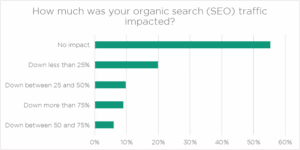By default, WordPress uses the “Email” field in General Settings to send any system notifications through email. It could be a form submission, like someone trying to contact you, or it could be a system notification that WordPress automatically ran the latest update successfully. In any case, not all notifications are critical, but contact requests from a potential client sure are important.
WordPress uses PHPMailer (wp_mail) as its primary email function to send email notifications. Wp_mail is very basic, but can be configured to send in different formats (plain text / HTML) and event to use SMTP (Simple Mail Tranfer Protocol). However, you would need to be comfortable doing some manual PHP configuration to make these changes.
What is SMTP?
Simply put, SMTP is the standard communication protocol for sending email messages. Because SMTP uses a protocol, it carries essential data about the transmission to identify important information about the message. This makes it possible to reduce spam by “authenticating” the sender. This is what WP_Mail lacks by default.
Why is SMTP Important?
As mentioned above, sending email notifications that are NOT using SMTP will not be authetniated. This is important, because depending on the email service you use (ex. Gmail, Exchange, AOL, etc), the specific policy may not allow you even receive non-authenticated email. Therefore, you may be missing important email notifications from WordPress.
Failure is not an Option
One of the best ways (and easiest) to fix this problem is to use a WordPress plugin called POST SMTP by Jason Hendriks, Yehuda Hassine. This plugin as been very reliable and easy to setup SMTP for your WordPress website. The plugin has many features that allow for advanced setup with OAuth v2.0 (no username / password needed) and external email platforms setup. But, one of the best features is that Post SMTP will send email through WP_Mail if there is a failure to send through SMTP. This improves your chances of getting an email notification even if there is some sort of a problem with external systems.
If you have questions or need help setting up SMTP on your WordPress website, give us a call.


